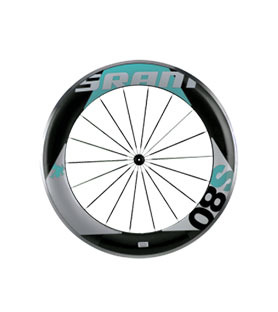
- Afrikaans
- Albanian
- Amharic
- Arabic
- Armenian
- Azerbaijani
- Basque
- Belarusian
- Bengali
- Bosnian
- Bulgarian
- Catalan
- Cebuano
- Corsican
- Croatian
- Czech
- Danish
- Dutch
- English
- Esperanto
- Estonian
- Finnish
- French
- Frisian
- Galician
- Georgian
- German
- Greek
- Gujarati
- Haitian Creole
- hausa
- hawaiian
- Hebrew
- Hindi
- Miao
- Hungarian
- Icelandic
- igbo
- Indonesian
- irish
- Italian
- Japanese
- Javanese
- Kannada
- kazakh
- Khmer
- Rwandese
- Korean
- Kurdish
- Kyrgyz
- Lao
- Latin
- Latvian
- Lithuanian
- Luxembourgish
- Macedonian
- Malgashi
- Malay
- Malayalam
- Maltese
- Maori
- Marathi
- Mongolian
- Myanmar
- Nepali
- Norwegian
- Norwegian
- Occitan
- Pashto
- Persian
- Polish
- Portuguese
- Punjabi
- Romanian
- Russian
- Samoan
- Scottish Gaelic
- Serbian
- Sesotho
- Shona
- Sindhi
- Sinhala
- Slovak
- Slovenian
- Somali
- Spanish
- Sundanese
- Swahili
- Swedish
- Tagalog
- Tajik
- Tamil
- Tatar
- Telugu
- Thai
- Turkish
- Turkmen
- Ukrainian
- Urdu
- Uighur
- Uzbek
- Vietnamese
- Welsh
- Bantu
- Yiddish
- Yoruba
- Zulu
Dec . 24, 2024 06:07 Back to list
how to adjust rear derailleur on a mountain bike
How to Adjust the Rear Derailleur on a Mountain Bike
Adjusting the rear derailleur on your mountain bike is a crucial skill for ensuring smooth and precise gear changes. Over time, the derailleur can become misaligned due to wear and tear, rough rides, or even impacts from rocks and roots. Mastering this adjustment process can enhance your riding experience, improve gear shifting, and prolong the lifespan of your bike components. Here’s a detailed guide on how to adjust your rear derailleur effectively.
Tools You’ll Need
Before you begin, gather the necessary tools - A 5mm Allen wrench (for most derailleur screws) - A Phillips screwdriver (if needed) - A 10mm or 15mm wrench (for wheel removal) - Chain lubricant
Step 1 Prepare Your Bike
Start by ensuring your bike is in a safe and stable position. If you have a bike stand, place your bike on it. Otherwise, flip it upside down or lean it against a wall. Check that the rear wheel is well secured and clear of any obstructions.
Step 2 Inspect the Derailleur
Take a close look at the rear derailleur. Check for any visible damage, such as bent hangers or broken components. Ensure the derailleur is clean and lubricated. If the chain is dirty, clean it and apply new lubricant before proceeding, as a clean drivetrain will help you achieve better shifting performance.
Step 3 Adjust the Limit Screws
The rear derailleur has two limit screws, often labeled as H (high) and L (low)
. These screws control the derailleur's range of motion and prevent the chain from falling off the cassette.1. Set the High Limit (H) Shift to the smallest sprocket (highest gear) on the rear cassette. Use the Allen wrench to turn the H screw. If the chain is rubbing against the derailleur or if it won’t shift to the smallest sprocket, adjust the screw until it shifts smoothly.
how to adjust rear derailleur on a mountain bike

2. Set the Low Limit (L) Now shift to the largest sprocket (lowest gear). Adjust the L screw similarly. Ensure that the chain doesn’t overshift and rub against the derailleur body.
Step 4 Adjust the Cable Tension
Once the limit screws are set, it's time to adjust the cable tension. This step is crucial for avoiding sluggish shifting.
- To increase tension, turn the barrel adjuster (located where the cable enters the derailleur) counterclockwise. - To decrease tension, turn it clockwise.
Test the shifting by clicking through the gears while rotating the pedals. Ideally, the chain should move smoothly and quickly between sprockets.
Step 5 Fine-tuning the Indexing
If you find that the shifting is still not perfect, further fine-tuning may be required. Shift to the middle gear (often the most stable) and make small adjustments to the barrel adjuster while shifting through all the gears. Make incremental adjustments and test the shifting after each change. Listen for any skipping or hesitation; this may indicate that adjustments are necessary.
Step 6 Conduct a Road Test
After adjustments, take your bike for a short ride. Pay close attention to how the bike shifts under load going uphill and downhill. If any problems arise, recheck the limit screws and cable tension.
Conclusion
Adjusting the rear derailleur on your mountain bike may seem intimidating initially, but with practice, it can become a straightforward task. Keeping your derailleur properly adjusted will enhance your riding experience by providing smoother shifts and improving overall bike performance. Regular checks and adjustments can help you maintain your bike’s functionality and avoid more significant repairs down the road. Embrace this essential maintenance skill, and enjoy your rides with confidence!
-
The Ultimate Kids' Four-Wheeler Experience
NewsJul.09,2025
-
The Ultimate Guide to Mountain Bikes: Gear Up for Your Ride
NewsJul.09,2025
-
The New Age of Cycling: Electric Bikes for Every Rider
NewsJul.09,2025
-
The Best Kids Bicycles: Ride in Style and Safety
NewsJul.09,2025
-
The Best 3-Wheel Scooters for Kids: Fun, Safety, and Adventure
NewsJul.09,2025
-
Revolutionize Your Ride: Affordable Electric Bikes
NewsJul.09,2025
-
Finding the Perfect Mountain Bike for Every Rider
NewsJul.09,2025



